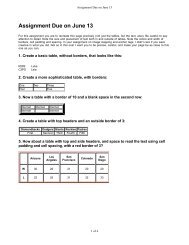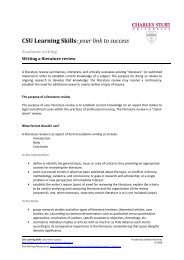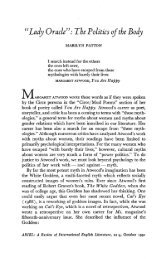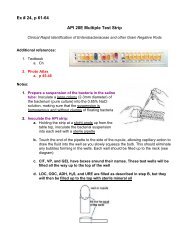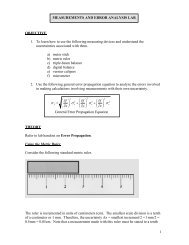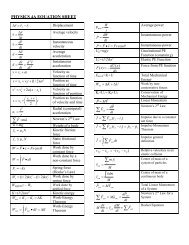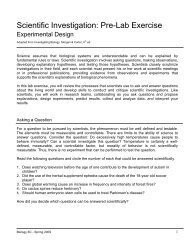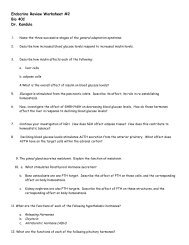Introduction to Chordates & Fish Anatomy - De Anza College
Introduction to Chordates & Fish Anatomy - De Anza College
Introduction to Chordates & Fish Anatomy - De Anza College
You also want an ePaper? Increase the reach of your titles
YUMPU automatically turns print PDFs into web optimized ePapers that Google loves.
<strong>Fish</strong> Ana<strong>to</strong>my<br />
This part of the lab comes <strong>to</strong> you straight from the grocery s<strong>to</strong>re. You’ll have the opportunity <strong>to</strong><br />
examine a variety of fresh fish.<br />
<strong>Fish</strong> Taxonomy<br />
The taxonomy of <strong>Chordates</strong> can be confusing, because there are traditional, well-known groups<br />
(like fish) that don’t reflect real evolutionary relationships. Most fish have traditionally been<br />
grouped in two classes within the phylum Chordata: Osteichtyes, or bony fish (which includes<br />
most kinds of fish) and the Chondrichthyes, or cartilaginous fish (which includes sharks and<br />
rays). However, the actual evolutionary relationships of fish are a bit more complex, as shown in<br />
the cladograms in Campbell, ch. 34.<br />
This lab will focus on the bony fish, traditionally classified as Osteichthyes. Most of the bony fish<br />
belong <strong>to</strong> a group within the Osteichthyes called the Actinopterygii.<br />
<strong>Fish</strong> Ana<strong>to</strong>my<br />
In this handout, you’ll see various diagrams with numerous ana<strong>to</strong>mical features listed. Study<br />
them all, but the terms you’re likely <strong>to</strong> see on a lab exam are those listed in bold type in the text<br />
of this handout. You won’t be tested on everything in the diagrams.<br />
External ana<strong>to</strong>my<br />
Before you cut the fish open, see what you can learn from the outside. Note that different fish<br />
may have very different shapes, especially for their fins. Can you make any guesses about how<br />
your fish lives<br />
Look for the features shown in the diagram below.<br />
Brian McCauley & Bruce Heyer 11/18/07 Page 6 of 13



